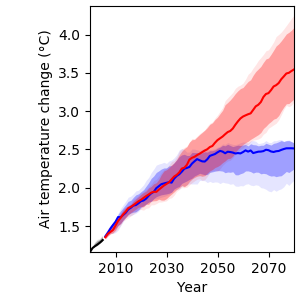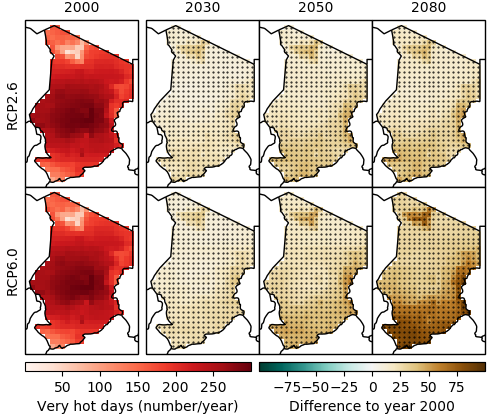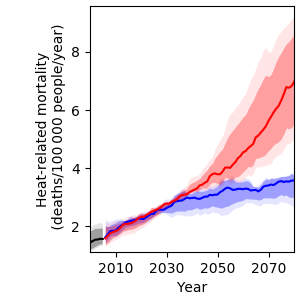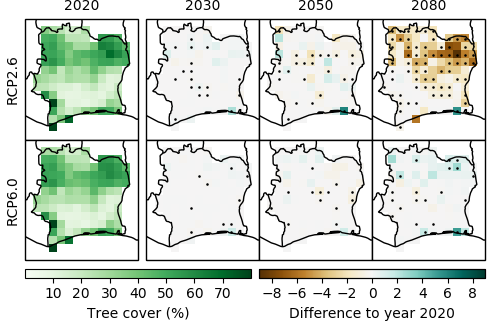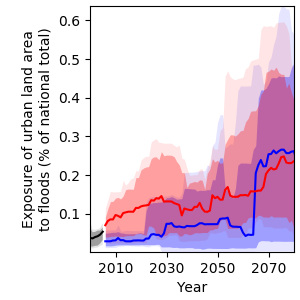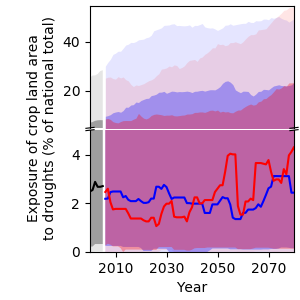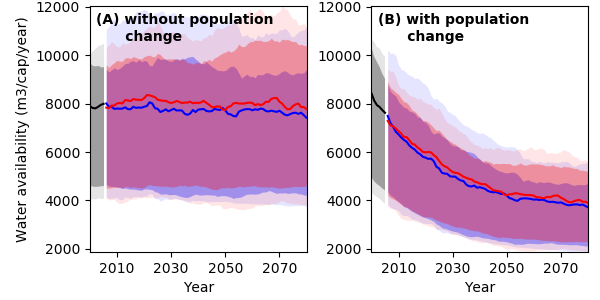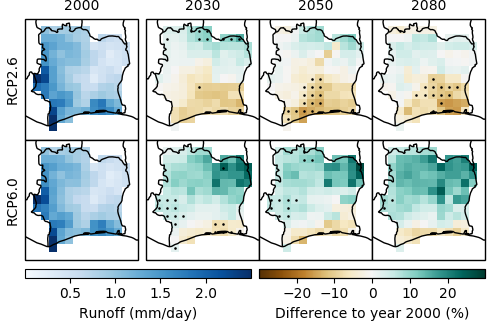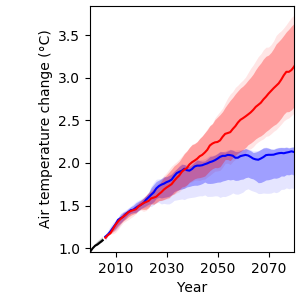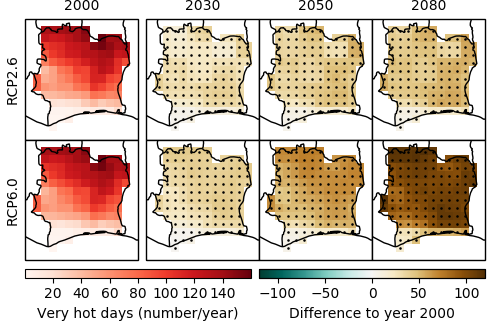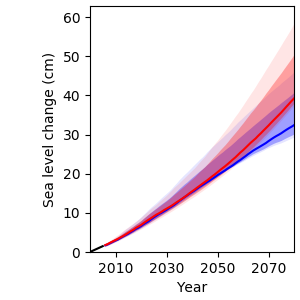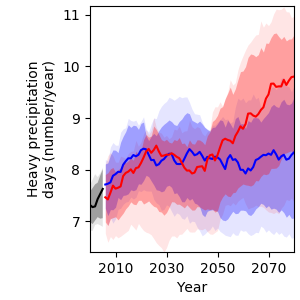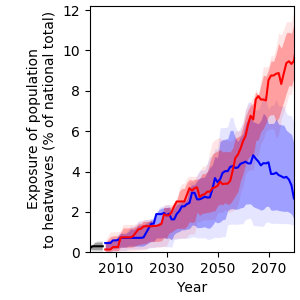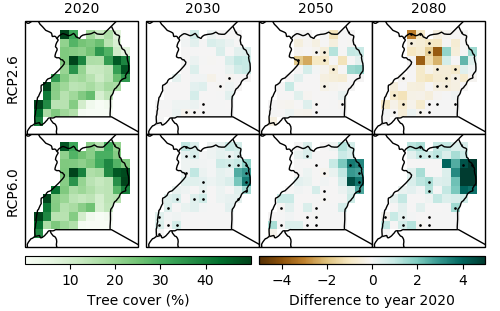Over the last decades, Chad has experienced strong seasonal and annual variations in precipitation, which present a major constraint to agricultural production [17], [18]. The country was hit by severe droughts between 1950 and the mid-1980s as precipitation decreased during that time [19]. Annual precipitation sums recovered afterwards but remain below the 20th century average [19]. Further droughts were registered in 2005, 2008, 2010 and 2012 [20]. The 2012 Sahel drought affected a total of 3.6 million people in Chad [21]. Transhumance used to be an effective way to deal with variations in precipitation and droughts, with many Chadian pastoralists migrating to the Central African Republic during the dry season [22]. However, people’s reliance on this type of pastoralism has been challenged by increasingly unpredictable precipitation patterns and a 150-km southward spread of the Sahara and Sahel zones over the period between 2005 and 2015 [23]. The resulting lack of pastures and water has led to increasing competition over these scarce resources [23]. Other stressors include population growth, conflicts between farmers and herders and terrorist activities in the greater region, making this mode of living less profitable and sometimes even dangerous [24], [25]. Repeated droughts tend to have a cascading effect: Lack of water reduces crop yields, which increases the risk of food insecurity for people and their livestock, which in turn limits their capacity to cope with future droughts [26].
Per capita water availability
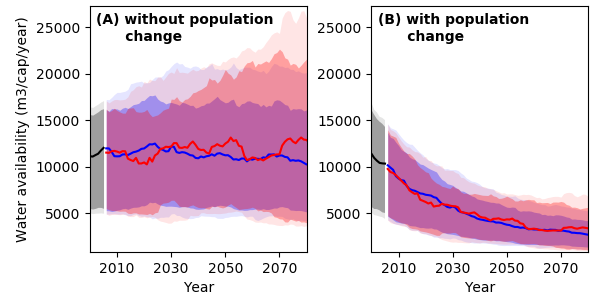
Current projections of water availability in Chad display high uncertainty under both GHG emissions scenarios. Assuming a constant population level, multi-model median projections suggest almost no change in per capita water availability over Chad by the end of the century under either RCPs (Figure 8A). Yet, when accounting for population growth according to SSP2 projections5, per capita water availability for Chad is projected to decline by 75 % by 2080 relative to the year 2000 under both scenarios (Figure 8B). While this decline is primarily driven by population growth rather than climate change, it highlights the urgency to invest in water saving measures and technologies for future water consumption.
Spatial distribution of water availability
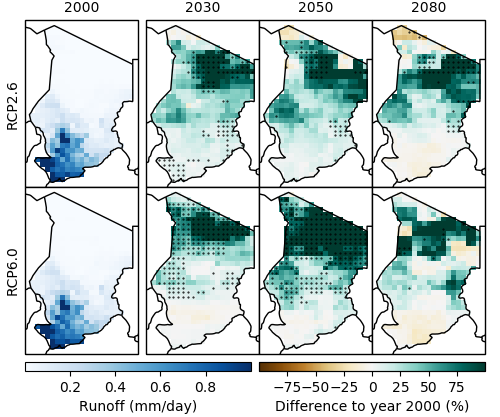
Projections of future water availability from precipitation vary depending on the region (Figure 9). In line with precipitation projections, water availability is projected to increase in central and particularly in northern Chad under both RCPs. However, especially towards the end of the century, model agreement on these increases is low. The projected increase in water availability is based on a constant population level. Hence, water saving measures are likely to remain important for the country’s rapidly growing population.
5 Shared Socio-economic Pathways (SSPs) outline a narrative of potential global futures, including estimations of broad characteristics such as country-level population, GDP or rate of urbanisation. Five different SSPs outline future realities according to a combination of high and low future socio-economic challenges for mitigation and adaptation. SSP2 represents the “middle of the road”-pathway.
References
[17] B. Sarr et al., “Adapting to Climate Variability and Change in Smallholder Farming Communities: A Case Study From Burkina Faso, Chad and Niger (CVCADAPT),” J. Agric. Ext. Rural Dev., vol. 7, no. 1, pp. 16–27, 2015.
[18] P. Maharana, A. Y. Abdel-Lathif, and K. C. Pattnayak, “Observed Climate Variability Over Chad Using Multiple Observational and Reanalysis Datasets,” Glob. Planet. Change, vol. 162, pp. 252–265, 2018.
[19] USAID, “A Climate Trend Analysis of Chad,” Washington, D.C., 2012.
[20] USAID, “Climate Change Risk Profile: West Africa Sahel,” Washington, D.C., 2017.
[21] FAO, “Race on to Help Farmers and Herders in Drought-Stricken Sahel,” 2012. Online available: http://www.fao.org/emergencies/fao-inaction/stories/stories-detail/en/c/148046 [Accessed: 24-Apr-2020].
[22] FAO, “Strengthening Social Cohesion Among Communities in the Central African Republic and Chad Through Sustainable Management of Cross-Border Transhumance,” 2020. Online available: http://www.fao.org/emergencies/fao-in-action/stories/stories-detail/en/c/1261074 [Accessed: 23-Apr-2020].
[23] Republic of Chad, “Intended Nationally Determined Contributions (INDC) for the Republic of Chad,” N’Djamena, Chad, 2015.
[24] U. T. Okpara, L. C. Stringer, and A. J. Dougill, “Using a Novel Climate–Water Conflict Vulnerability Index to Capture Double Exposures in Lake Chad,” Reg. Environ. Chang., vol. 17, pp. 351–366, 2017.
[25] S. T. Asah, “Transboundary Hydro-Politics and Climate Change Rhetoric: An Emerging Hydro-Security Complex in the Lake Chad Basin,” WIREs Water, vol. 2, pp. 37–45, 2015.
[26] S. Traore and T. Owiyo, “Dirty Droughts Causing Loss and Damage in Northern Burkina Faso,” Int. J. Glob. Warm., vol. 5, no. 4, pp. 498–513, 2013.




